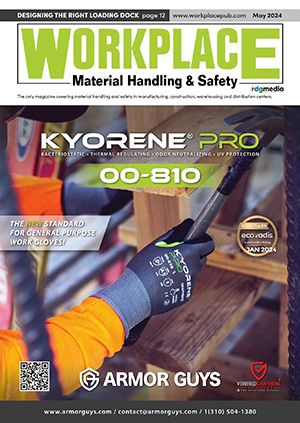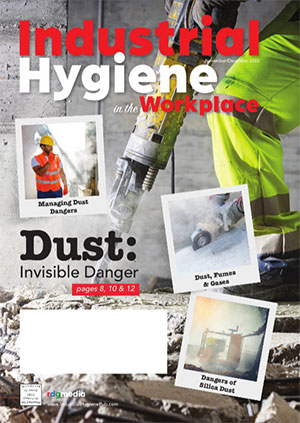How to Label Your Facility for Safety
By Kelsey Rzepecki
Before beginning work, it’s crucial to evaluate your facility for safety hazards. Consistent and effective labeling, in accordance with OSHA and other industry regulations, is essential to prevent workplace injuries, costly downtime, workers’ compensation claims, and fines.
You can do this by making safety a priority before any work begins and communicating hazards and safety instructions with effective signs and labels. Start by conducting a facility safety inspection and evaluation of all operations, equipment, and work areas. Here are the main areas to address for general industry compliance:
General Safety
Every facility has different needs and limitations, but a safe work environment is a requirement for all workplaces. Everyone in your facility must understand the message each sign conveys. OSHA helps break down how safety signs should be used, and where they should be placed. For guidance on label and sign design standards in accordance with OSHA and ANSI, download the Best Practice Guide to OSHA Safety Signs.
Identification of Piping Systems
If your facility has a piping system, keep personnel safe and alert to hazards of a pipe’s contents by marking all pipes and piping components. Clear labeling can also increase safety and efficiency during maintenance and shut-off procedures. Easily meet ANSI/ASME A13.1 standards for general pipe marking with the Best Practice Guide to Pipe Marking.
Electrical Equipment and Safety
General electrical safety requirements show up on OSHA’s top 10 most frequently cited violations year after year. In addition to OSHA’s regulations, the industry standard to follow for electrical workplace safety is NFPA 70E. Prevent injury from electrical hazards by clearly labeling all control panels and components. Display voltage ratings, arc flash warnings, electrical clearances, and important safety procedures like lockout/tagout.
Because each workplace is different, you may need the ability to customize electrical signs and identification labels. With the variety of rules about equipment labeling, it can be difficult to keep track of exactly what is required. Identify the supplies you’ll need to outfit your control panels and components with this easy to follow list of labeling solutions and related regulations: Guide to Control Panel Labeling.
Emergency Preparedness
Eliminate risk to workers in emergencies. Ensure your workplace is ready for a potential disaster with effective planning and preparation to minimize company losses. Get a breakdown of the components of emergency planning and equip your facility with key emergency signage and markings. Utilize checklists to assess your facility’s needs and understand the elements of an OSHA-required Emergency Action Plan (EAP).
Hazardous Chemicals
Workers need to know about and understand any chemical hazards they’ll be working with. Identify all hazardous chemicals present in the workplace and clearly label them in accordance with OSHA’s preferred labeling approach, based on the international GHS system. Understand the components of GHS Labeling and how to make a compliant chemical label.
Lean Manufacturing
Keep your day-to-day operations and workspaces organized by implementing lean manufacturing tools such as the 5S system. Use our guide to 5S to improve workplace efficiency through facility organization. Install effective visuals to give workers clear and accurate identification of locations, equipment, procedures, hazards, inventories, and tools.
Floor Marking
OSHA requires the periodic inspection of all walking and working surfaces to ensure they are kept clean, safe, and accessible (29 CFR 1910.22). Consistent and clear markings help improve overall efficiency and safety, especially in warehousing environments. Enhance safety and improve order with floor marking products to designate work zones, mark aisles, and alert personnel to hazardous areas.
Label Placement and Visual Solutions
All signs and labels should be clearly visible and legible at all times. Proper label placement will support this and can reduce chances of miscommunication and potential injury. For effective label placement:
- Place labels and signs at eye-level for a clear view from a normal angle of approach.
- Color-code labels to make them easier to recognize from long distances.
- Install floor marking to communicate messages in hard-to-label areas.
- Improve safety awareness and navigation anywhere with thoughtful wayfinding.
Maintain safety and compliance by conducting periodic facility safety inspections to uncover new hazards and conditions, and always have a plan in place to mitigate them. Also, make sure labels remain intact, legible, and accurate.
To ensure long-lasting labels, use high-quality labeling supplies that are engineered to endure a variety of harsh industrial environments. This will save you from ongoing replacement costs and your overall bottom line. You can also instantly enhance safety anywhere with premade labels and signs that feature a variety of general safety messages for popular industry applications.
Kelsey Rzepecki writes for Graphic Products, makers of the DuraLabel line of industrial label and sign printers. For more information about customized visual communication, visit www.GraphicProducts.com or call 800.788.5572.



